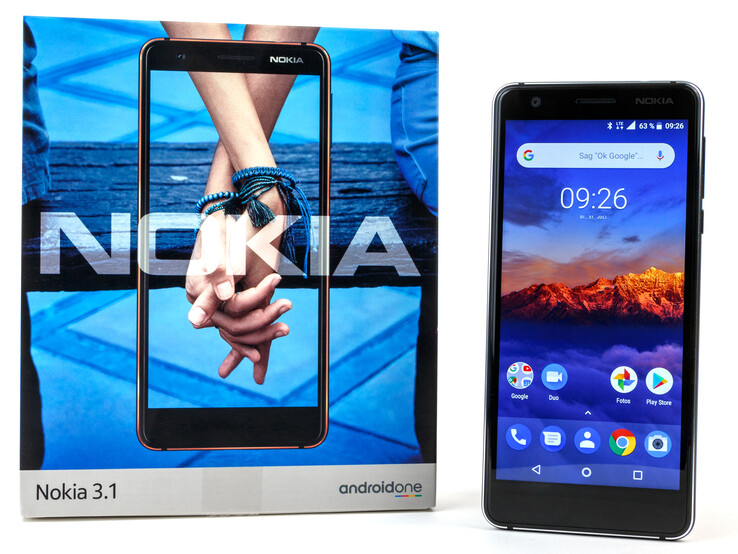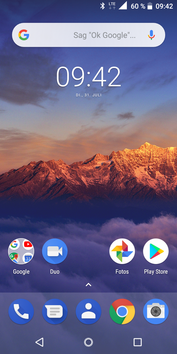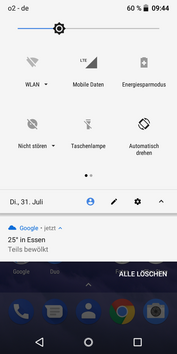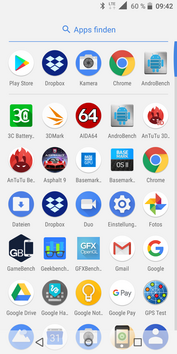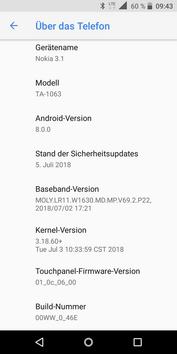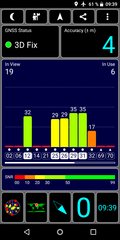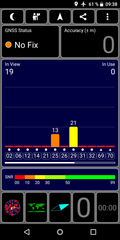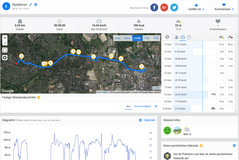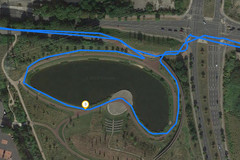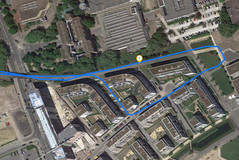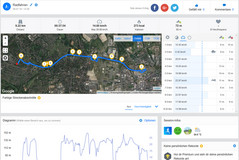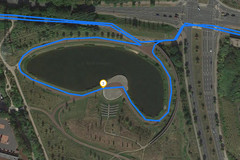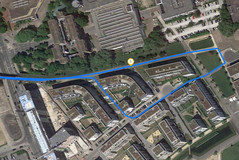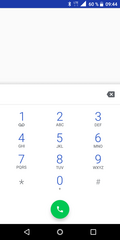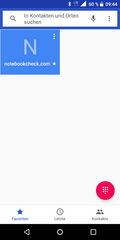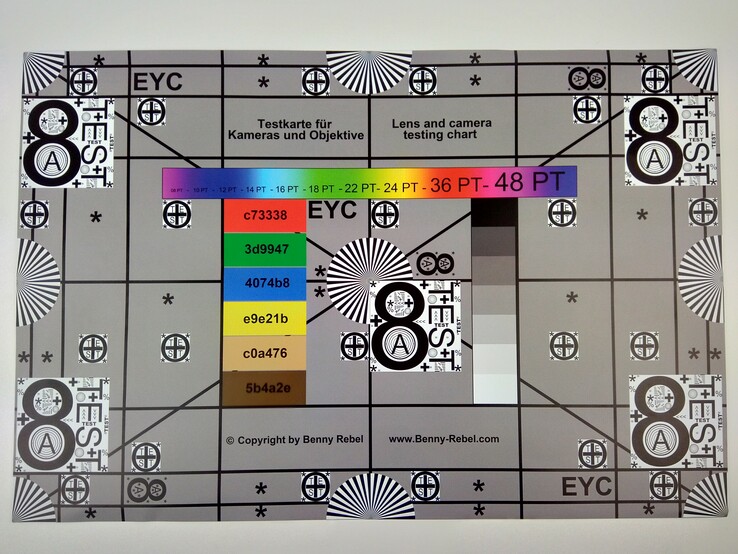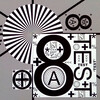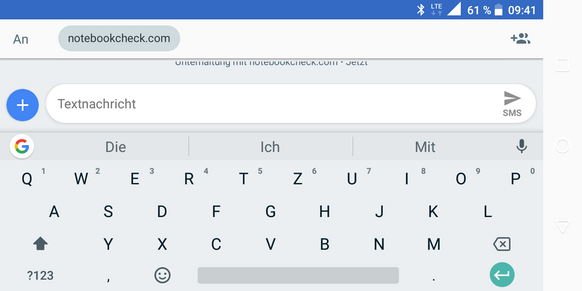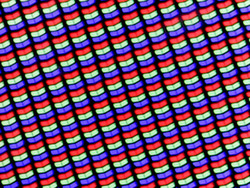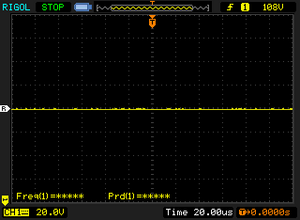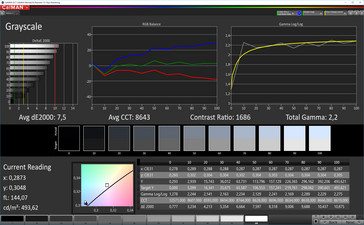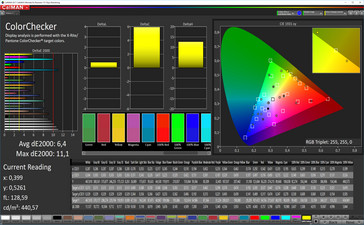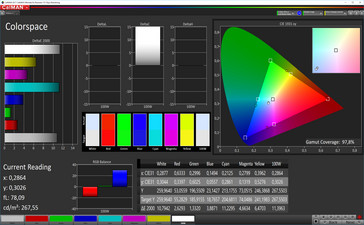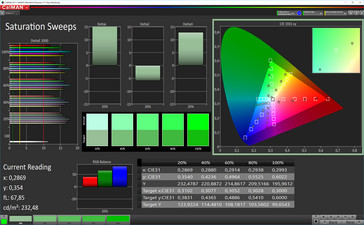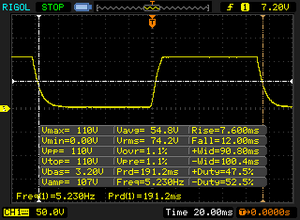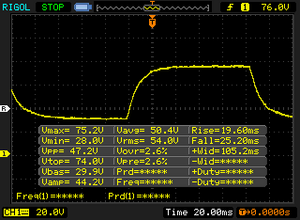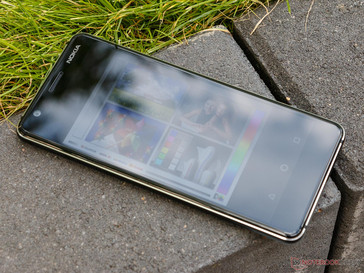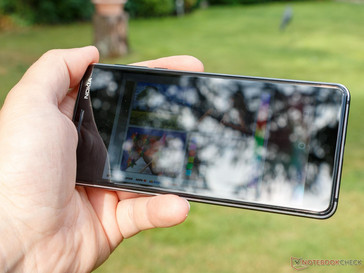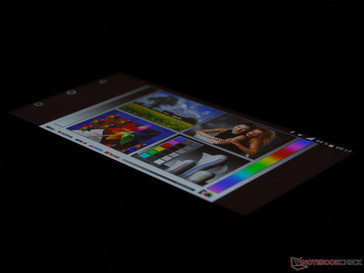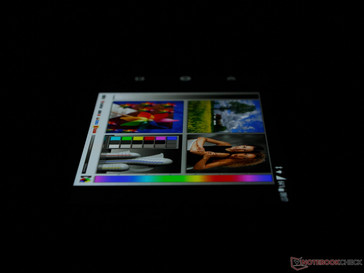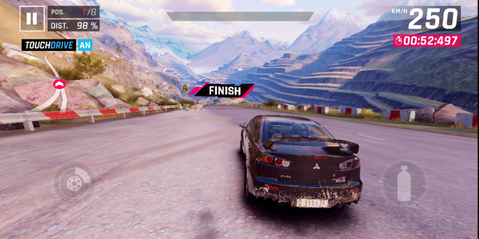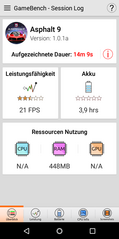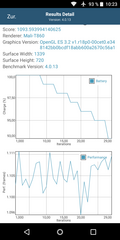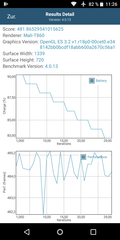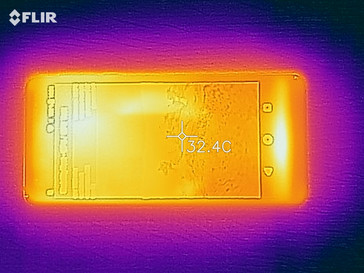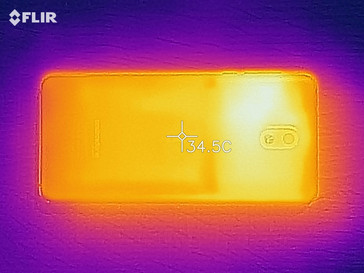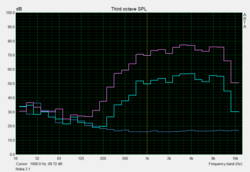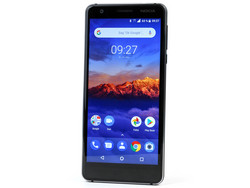Nokia 3.1 Smartphone Review
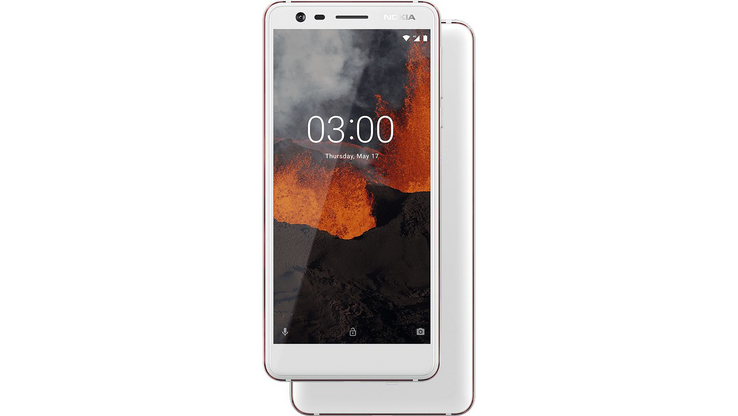
HMD Global’s Nokia 3.1 is a typical entry-level smartphone powered by a low to mid-range MediaTek SoC and, unlike its predecessor, equipped with a 2:1 display with a resolution of 1440 x 720 pixels. Depending on the model, it features either 2 or 3 GB of RAM and 16 or 32 GB of storage space, respectively. The 2,990-mAh battery is slightly bigger than the one in last year’s model, and the device still features a single-lens camera. Our review unit was the low-end entry-level model that sold for around $160 at the time of writing.
Its main competitors are the Gigaset GS185, Motorola Moto G6 Play, and the Honor 7C. Other previously more expensive phones, such as last year’s Samsung Galaxy J5 (2017), can also be found in this price range.
Case
The Nokia 3.1 is available in Black, Blue, or Gray. Its front is completely covered by Corning Gorilla Glass embedded into a plastic frame that is in turn embedded into the aluminum case. The rear side is made of plastic. The protruding camera bump may look ugly but it does a great job in protecting the slightly recessed lens.
Overall build quality was very good with narrow and consistent gaps. The smartphone resisted pressure fairly well as even immense force applied to the display did not result in any visible ripple effects. Torsional forces, however, did produce noticeable creaking.
The battery is not user-replaceable, and the phone features two card slots: one for a microSD card and one for up to two nano SIM cards. The trays are made of metal and thus very sturdy.
Connectivity
Connectivity has remained unchanged from last year’s model. The micro USB port at the bottom is used for charging, data transfers at USB 2.0 speeds, and USB OTG for external peripherals.
Micro SD cards of up to 128 GB are supported, although we suggest to take this with a grain of salt. Our 64 GB Toshiba Exceria Pro M501 reference card refused to work in the Nokia 3.1, and we had to revert to the M401 instead. SD cards can be formatted either as external storage for media files only or as internal storage for apps and data.
Furthermore, the phone supports Bluetooth 4.2, NFC, and FM radio. Unfortunately, it lacks a fingerprint reader and any form of facial recognition.
Software
The device comes with Android 8.0 Oreo preinstalled. Despite the fact that it is an Android One device the update to 8.1 was nowhere to be seen, and nobody was able to give us further information regarding a possible time frame. In general, the Android One program should guarantee at least two full years of major updates plus one extra year of security updates. Those, at least, were up to date on our review unit.
We found no additional apps other than the usual Google apps preloaded onto our device, and Android’s user management capabilities were enabled. HMD Global offers an application called Nokia Suite for synchronizing the phone with a computer. It is the successor to the Nokia PC Suite that was discontinued back in 2012.
Communication and GPS
Compared to last year’s model, support for one LTE band is missing from the new model, namely band 28 (700 MHz). Unlike European providers, neither American nor Canadian operators use this particular band so it does not really matter. Otherwise, cellular support is decent and even includes bands 38 and 40 that are commonly used in Russia and China. Transfer speeds were limited to just 150 Mbps download / 50 Mbps upload and thus on the slow side. Cellular reception was unremarkable during the review period.
Supported Wi-Fi standards include 2.4 and 5 GHz IEE802.11a/b/g/n. Transfer rates when connected to our Linksys EA8500 reference router were okay and consistent.
| Networking | |
| iperf3 transmit AX12 | |
| Samsung Galaxy J5 (2017) Duos | |
| Nokia 3.1 | |
| Nokia 3 | |
| Gigaset GS185 | |
| Honor 7C | |
| Motorola Moto G6 Play | |
| iperf3 receive AX12 | |
| Samsung Galaxy J5 (2017) Duos | |
| Nokia 3.1 | |
| Nokia 3 | |
| Gigaset GS185 | |
| Honor 7C | |
| Motorola Moto G6 Play | |
Supported location services include GPS (American) and GLONASS (Russian). While we were unable to obtain GPS lock indoors outdoor accuracy was very good at just 4 m (~13 feet). However, it took a very long 10 seconds to secure a stable satellite connection.
We took the Nokia 3.1 on our usual bicycle tour to compare it to a professional Garmin Edge 500 GPS device. The recorded track was just 30 m (~98 feet) shorter on the Nokia smartphone, and looking at the details we discovered that both devices recorded very similar tracks. In other words: the Nokia 3.1’s GPS capabilities were outstanding.
Telephony and Call Quality
Google’s default well-known and well-established telephone app is HMD Global’s app of choice when it comes to telephony.
Call quality on earphone was decent and trouble-free although it was instantly noticeable on the other side that we were using a cellular phone. Speakerphone, however, turned out to be more of a makeshift than a usable and legit way to make or take phone calls. Even with the phone placed directly next to us or very close by our conversational partners had serious trouble deciphering what we were saying, and the phone’s speakers distorted noticeably.
In theory, the Nokia 3.1 comes with support for VoLTE, however we were unable to test it in the O2 network that we used the phone in.
Cameras
The front-facing camera features an 8 MP sensor but was surprisingly light-sensitive and included a beauty mode for improved selfies. Daylight photos turned out very decent but the camera quickly surrendered to decreasing light. Videos are recorded in 720p.
The main rear-facing camera has been upgraded and now features a 13 MP sensor. Photos were very decent save for the landscape photo. Macro shots worked surprisingly well, and the single LED flash did a good job improving low-light photos to a certain extent. Low-light still photos were doable even without the flash albeit they came at the cost of increased noise. Shutter lag was okay but not the best and taking fast-paced snapshots can be a challenge.
Videos are recorded in FHD and offer decent sound quality. Back light, however, turned out to be a major challenge for the Nokia 3.1’s camera, and it also lacks image stabilization. Slow-motion videos are recorded in 480p and are not particularly slow. Time lapses are recorded in 1080p and were very decent.
Accessories and Warranty
European customers get 24 months of limited warranty when purchasing a Nokia 3.1 smartphone. American customers are once again deprived of the second year and restricted to just 12 months. In some countries, HMD Global offers a so-called Nokia Service insurance. It does not extend warranty beyond the two years but adds additional covered incidents, such as accidental drop damage, fire, water damage, shorts, or other forms of wrongful handling instead. It must be obtained within two weeks of purchasing the device. Please see our Guarantees, Return policies and Warranties FAQ for country-specific information.
Included in the box were the usual suspects: a modular power supply (5 V / 1 A), a USB cable, a SIM tool, a headset, and a quick-start guide in 15 different languages.
Input Devices and Handling
The 10-point multi-touch capacitive touchscreen had a very smooth surface that was conveniently easy to clean. Its precision and accuracy were good and its response times were low. Input was translated into actions very quickly, and the only times we noticed any sort of input lag was when either multitasking or running more demanding applications.
The default keyboard app is Google’s GBoard. It can be easily replaced with a variety of other keyboards available in the Google Play Store.
Unfortunately, the Nokia 3.1 lacks a fingerprint reader and only supports conventional methods of securing your phone, namely PIN code, password, or swipe gesture.
Display
On paper, the Nokia 3.1’s IPS panel’s size increased to 5.2 inches diagonally. In reality, it only grew by around 80 square millimeters due to the changed aspect ratio. Its 1440 x 720 resolution makes for a decent pixel density and is high enough for a very crisp and sharp image without recognizable pixels.
At 509 nits maximum brightness was impressive, and brightness distribution was very decent as well. Unfortunately, at 19 nits minimum brightness was too high for comfortable use in the dark, particularly considering that the device lacks a night mode.
Black level was very low at 0.24 nits, and somewhat higher in the APL 50 test with evenly distributed bright and dark areas (0.44 nits). Thus, contrast ratio under realistic conditions was a good 1,136:1.
| |||||||||||||||||||||||||
Brightness Distribution: 93 %
Center on Battery: 506 cd/m²
Contrast: 2108:1 (Black: 0.24 cd/m²)
ΔE ColorChecker Calman: 6.4 | ∀{0.5-29.43 Ø4.78}
ΔE Greyscale Calman: 7.5 | ∀{0.09-98 Ø5}
97.8% sRGB (Calman 2D)
Gamma: 2.2
CCT: 8643 K
| Nokia 3.1 IPS, 1440x720, 5.2" | Nokia 3 IPS, 1280x720, 5" | Honor 7C IPS, 1440x720, 6" | Gigaset GS185 IPS, 1440x720, 5.5" | Samsung Galaxy J5 (2017) Duos Super AMOLED, 1280x720, 5.2" | Motorola Moto G6 Play IPS, 1440x720, 5.7" | |
|---|---|---|---|---|---|---|
| Screen | -11% | -25% | -33% | 21% | 8% | |
| Brightness middle (cd/m²) | 506 | 481 -5% | 392 -23% | 426 -16% | 448 -11% | 614 21% |
| Brightness (cd/m²) | 490 | 469 -4% | 403 -18% | 412 -16% | 451 -8% | 593 21% |
| Brightness Distribution (%) | 93 | 84 -10% | 85 -9% | 86 -8% | 91 -2% | 90 -3% |
| Black Level * (cd/m²) | 0.24 | 0.22 8% | 0.61 -154% | 0.7 -192% | 0.29 -21% | |
| Contrast (:1) | 2108 | 2186 4% | 643 -69% | 609 -71% | 2117 0% | |
| Colorchecker dE 2000 * | 6.4 | 8.1 -27% | 5.4 16% | 5.3 17% | 2.7 58% | 5.9 8% |
| Colorchecker dE 2000 max. * | 11.1 | 15.4 -39% | 9.7 13% | 10.2 8% | 9.8 12% | 9.6 14% |
| Greyscale dE 2000 * | 7.5 | 8.5 -13% | 4.2 44% | 6.3 16% | 1.6 79% | 5.5 27% |
| Gamma | 2.2 100% | 2.16 102% | 2.59 85% | 2.4 92% | 2.06 107% | 2.32 95% |
| CCT | 8643 75% | 9014 72% | 6734 97% | 8073 81% | 6557 99% | 7822 83% |
* ... smaller is better
Screen Flickering / PWM (Pulse-Width Modulation)
| Screen flickering / PWM not detected | |||
In comparison: 53 % of all tested devices do not use PWM to dim the display. If PWM was detected, an average of 8118 (minimum: 5 - maximum: 343500) Hz was measured. | |||
We test each display with the CalMAN software and spectrophotometer. Colors suffered from a measurable blue tint most noticeable in light Grays and a generally rather cool display of colors. Speaking of which, color accuracy was generally decent save for Blue and Cyan, which were visibly distorted. Most competitors did better in this test than the Nokia 3.1.
Display Response Times
| ↔ Response Time Black to White | ||
|---|---|---|
| 19.6 ms ... rise ↗ and fall ↘ combined | ↗ 7.6 ms rise | |
| ↘ 12 ms fall | ||
| The screen shows good response rates in our tests, but may be too slow for competitive gamers. In comparison, all tested devices range from 0.1 (minimum) to 240 (maximum) ms. » 42 % of all devices are better. This means that the measured response time is similar to the average of all tested devices (20.2 ms). | ||
| ↔ Response Time 50% Grey to 80% Grey | ||
| 44.8 ms ... rise ↗ and fall ↘ combined | ↗ 19.6 ms rise | |
| ↘ 25.2 ms fall | ||
| The screen shows slow response rates in our tests and will be unsatisfactory for gamers. In comparison, all tested devices range from 0.165 (minimum) to 636 (maximum) ms. » 75 % of all devices are better. This means that the measured response time is worse than the average of all tested devices (31.6 ms). | ||
Performance
The MediaTek MT6750N that the Nokia 3.1 is built around is a well-known contender. When it was first released as the MT6750 back in mid 2016, it was considered an upper mid-range SoC. Unfortunately, we don’t have any information as to what exactly changed in the N-version but looking at the specs it seems to be identical to the non-N-model: a total of eight cores made up of two quad-core Cortex A53 clusters running at 1.5 and 1 GHz, respectively. All things graphics are handled by an ARM Mali-T860 MP2 GPU, and the SoC has access to 2 GB of RAM.
While running our benchmarks we quickly noticed that the 6750N’s GPU performance was worse than the 6750’s, most likely because of a lower GPU core clock speed. In terms of raw CPU and GPU performance it scored somewhere in the middle of our test group and got bested most prominently by the Honor 7C and the Galaxy J5. That said overall system performance has been massively improved over its Nokia 3 predecessor.
| AnTuTu v6 - Total Score (sort by value) | |
| Nokia 3.1 | |
| Nokia 3 | |
| Honor 7C | |
| Gigaset GS185 | |
| Samsung Galaxy J5 (2017) Duos | |
| Motorola Moto G6 Play | |
| Average Mediatek MT6750N (n=1) | |
| AnTuTu v7 - Total Score (sort by value) | |
| Honor 7C | |
| Gigaset GS185 | |
| Samsung Galaxy J5 (2017) Duos | |
| Motorola Moto G6 Play | |
| PCMark for Android | |
| Work performance score (sort by value) | |
| Nokia 3.1 | |
| Nokia 3 | |
| Honor 7C | |
| Gigaset GS185 | |
| Samsung Galaxy J5 (2017) Duos | |
| Motorola Moto G6 Play | |
| Average Mediatek MT6750N (n=1) | |
| Work 2.0 performance score (sort by value) | |
| Nokia 3.1 | |
| Nokia 3 | |
| Honor 7C | |
| Gigaset GS185 | |
| Samsung Galaxy J5 (2017) Duos | |
| Motorola Moto G6 Play | |
| Average Mediatek MT6750N (n=1) | |
| GFXBench 3.0 | |
| on screen Manhattan Onscreen OGL (sort by value) | |
| Nokia 3.1 | |
| Nokia 3 | |
| Honor 7C | |
| Gigaset GS185 | |
| Samsung Galaxy J5 (2017) Duos | |
| Motorola Moto G6 Play | |
| Average Mediatek MT6750N (n=1) | |
| Average of class Smartphone (18 - 166, n=158, last 2 years) | |
| 1920x1080 1080p Manhattan Offscreen (sort by value) | |
| Nokia 3.1 | |
| Nokia 3 | |
| Honor 7C | |
| Gigaset GS185 | |
| Samsung Galaxy J5 (2017) Duos | |
| Motorola Moto G6 Play | |
| Average Mediatek MT6750N (n=1) | |
| Average of class Smartphone (12 - 606, n=157, last 2 years) | |
| GFXBench 3.1 | |
| on screen Manhattan ES 3.1 Onscreen (sort by value) | |
| Nokia 3.1 | |
| Nokia 3 | |
| Honor 7C | |
| Samsung Galaxy J5 (2017) Duos | |
| Motorola Moto G6 Play | |
| Average Mediatek MT6750N (n=1) | |
| Average of class Smartphone (11 - 166, n=158, last 2 years) | |
| 1920x1080 Manhattan ES 3.1 Offscreen (sort by value) | |
| Nokia 3.1 | |
| Nokia 3 | |
| Honor 7C | |
| Samsung Galaxy J5 (2017) Duos | |
| Motorola Moto G6 Play | |
| Average Mediatek MT6750N (n=1) | |
| Average of class Smartphone (8.4 - 413, n=157, last 2 years) | |
Web browsing performance was rather poor. Rendering complex websites took quite a while, which shows in the benchmarks scores: the Nokia 3.1 can be found mostly in the lower-end of the spectrum.
| JetStream 1.1 - Total Score | |
| Samsung Galaxy J5 (2017) Duos (Samsung Browser 5.4) | |
| Honor 7C (Chrome 66) | |
| Motorola Moto G6 Play (Chrome 66) | |
| Nokia 3.1 (Chrome 67) | |
| Average Mediatek MT6750N (n=1) | |
| Gigaset GS185 (Chrome 66) | |
| Nokia 3 (Chrome 59) | |
| Octane V2 - Total Score | |
| Average of class Smartphone (2228 - 121337, n=200, last 2 years) | |
| Samsung Galaxy J5 (2017) Duos (Samsung Browser 5.4) | |
| Honor 7C (Chrome 66) | |
| Motorola Moto G6 Play (Chrome 66) | |
| Nokia 3.1 (Chrome 67) | |
| Average Mediatek MT6750N (n=1) | |
| Gigaset GS185 (Chrome 66) | |
| Nokia 3 (Chrome 59) | |
| Mozilla Kraken 1.1 - Total | |
| Nokia 3 (Chrome 59) | |
| Nokia 3.1 (Chrome 67) | |
| Average Mediatek MT6750N (n=1) | |
| Motorola Moto G6 Play (Chrome 66) | |
| Gigaset GS185 (Chrome 66) | |
| Honor 7C (Chrome 66) | |
| Samsung Galaxy J5 (2017) Duos (Samsung Browser 5.4) | |
| Average of class Smartphone (257 - 28190, n=155, last 2 years) | |
| WebXPRT 2015 - Overall | |
| Samsung Galaxy J5 (2017) Duos (Samsung Browser 5.4) | |
| Gigaset GS185 (Chrome 66) | |
| Nokia 3.1 (Chrome 67) | |
| Average Mediatek MT6750N (n=1) | |
| Nokia 3 (Chrome 59) | |
* ... smaller is better
Almost half of the available storage was taken up and just 8.2 GB remained user accessible out of the box. Expanding storage via micro SD card seems to be a necessity rather than an option, particularly considering the Nokia 3.1’s support for formatting micro SD cards as internal storage and the card reader’s very respectable results when benchmarked with last year’s Toshiba Exceria Pro M401 reference card. Unfortunately, we are unable to make these claims in regard to the internal memory, which showed very poor write performance.
| Nokia 3.1 | Nokia 3 | Honor 7C | Gigaset GS185 | Samsung Galaxy J5 (2017) Duos | Motorola Moto G6 Play | Average 16 GB eMMC Flash | Average of class Smartphone | |
|---|---|---|---|---|---|---|---|---|
| AndroBench 3-5 | -26% | 36% | -0% | -9% | 148% | -24% | 2463% | |
| Sequential Read 256KB (MB/s) | 281.5 | 181 -36% | 297 6% | 275.7 -2% | 204.4 -27% | 243.7 -13% | 164.5 ? -42% | 2223 ? 690% |
| Sequential Write 256KB (MB/s) | 35.26 | 34 -4% | 115 226% | 45.54 29% | 52 47% | 135.8 285% | 43 ? 22% | 1838 ? 5113% |
| Random Read 4KB (MB/s) | 48.62 | 17.7 -64% | 30 -38% | 31.71 -35% | 24.07 -50% | 65.9 36% | 21.7 ? -55% | 295 ? 507% |
| Random Write 4KB (MB/s) | 9.2 | 5.5 -40% | 10 9% | 9.05 -2% | 9.9 8% | 61.7 571% | 8.08 ? -12% | 335 ? 3541% |
| Sequential Read 256KB SDCard (MB/s) | 77.2 ? | 64.3 -17% | 83.9 ? 9% | 84.3 ? 9% | 72.2 ? -6% | 83.2 ? 8% | 59.1 ? -23% | |
| Sequential Write 256KB SDCard (MB/s) | 59.8 ? | 62.9 5% | 62.6 ? 5% | 59.7 ? 0% | 44.21 ? -26% | 60.7 ? 2% | 39.8 ? -33% |
Gaming
Most games, except for the latest demanding AAA titles, will run just fine on the ARM Mali-T860 MP2 GPU, albeit more often than not in-game details will have to be reduced for a smooth gaming experience. Using GameBench we benchmarked the latest racing game Asphalt 9: Legends. In high details, the game ran rather poorly with frame rates as low as 15 FPS. It ran much better in standard settings, although occasional stuttering seemed unavoidable even so.
The display is not the largest, but the sensors and the touchscreen worked very reliably and were quick to react. Only the speaker was a bit weak and very often covered accidentally by our hands.
| Asphalt 9: Legends | |||
| Settings | Value | ||
| High Quality | 22 fps | ||
| Standard / low | 26 fps | ||
Emissions
Temperature
The Nokia 3.1’s surfaces mostly remained cool to the touch and got barely lukewarm under sustained heavy load.
Internal heat dissipation was determined using the GFXBench battery benchmark, and the device did very well indeed. Both, the T-Rex and the Manhattan test yielded a very consistent level of performance.
(+) The maximum temperature on the upper side is 34.2 °C / 94 F, compared to the average of 35.2 °C / 95 F, ranging from 21.9 to 247 °C for the class Smartphone.
(+) The bottom heats up to a maximum of 34.4 °C / 94 F, compared to the average of 34 °C / 93 F
(+) In idle usage, the average temperature for the upper side is 29.1 °C / 84 F, compared to the device average of 32.9 °C / 91 F.
Speaker
The single bottom-firing mono speaker can get rather loud, but its highs were so massively over-pronounced that mids and lows got all but lost along the way.
The included headphones were just mediocre at best. They produced a thin and tinny soundscape and continuously and vehemently refused to stay put in our ears. Analog audio performance over the 3.5-mm headphone jack was decent and capable of producing high-quality audio with the right equipment.
Nokia 3.1 audio analysis
(+) | speakers can play relatively loud (85.9 dB)
Bass 100 - 315 Hz
(-) | nearly no bass - on average 36.8% lower than median
(±) | linearity of bass is average (7.8% delta to prev. frequency)
Mids 400 - 2000 Hz
(+) | balanced mids - only 4.8% away from median
(±) | linearity of mids is average (7.2% delta to prev. frequency)
Highs 2 - 16 kHz
(±) | higher highs - on average 5.6% higher than median
(+) | highs are linear (3.7% delta to prev. frequency)
Overall 100 - 16.000 Hz
(±) | linearity of overall sound is average (26% difference to median)
Compared to same class
» 65% of all tested devices in this class were better, 6% similar, 28% worse
» The best had a delta of 11%, average was 35%, worst was 134%
Compared to all devices tested
» 79% of all tested devices were better, 4% similar, 16% worse
» The best had a delta of 4%, average was 24%, worst was 134%
Motorola Moto G6 Play audio analysis
(+) | speakers can play relatively loud (85.4 dB)
Bass 100 - 315 Hz
(-) | nearly no bass - on average 29.1% lower than median
(±) | linearity of bass is average (7.1% delta to prev. frequency)
Mids 400 - 2000 Hz
(±) | higher mids - on average 6.3% higher than median
(±) | linearity of mids is average (7.1% delta to prev. frequency)
Highs 2 - 16 kHz
(±) | higher highs - on average 6.7% higher than median
(+) | highs are linear (4.1% delta to prev. frequency)
Overall 100 - 16.000 Hz
(±) | linearity of overall sound is average (25.3% difference to median)
Compared to same class
» 62% of all tested devices in this class were better, 7% similar, 31% worse
» The best had a delta of 11%, average was 35%, worst was 134%
Compared to all devices tested
» 77% of all tested devices were better, 5% similar, 18% worse
» The best had a delta of 4%, average was 24%, worst was 134%
Battery Life
Power Consumption
In direct comparison with its immediate predecessor, the Nokia 3.1’s power consumption has been somewhat improved. When idle, it consumed less power than before despite its brighter display. Under load, on the other hand, its power consumption was slightly higher due to the more powerful SoC. Looking at its direct competitors the Nokia 3.1 did fairly well, and the only phone even more energy efficient was the Galaxy J5.
Charging the 2,990-mAh battery with the included charger from near empty to full took around 2.5 hours.
| Off / Standby | |
| Idle | |
| Load |
|
Key:
min: | |
| Nokia 3.1 2990 mAh | Nokia 3 2630 mAh | Honor 7C 3000 mAh | Gigaset GS185 4000 mAh | Samsung Galaxy J5 (2017) Duos 3000 mAh | Motorola Moto G6 Play 4000 mAh | Average Mediatek MT6750N | Average of class Smartphone | |
|---|---|---|---|---|---|---|---|---|
| Power Consumption | 11% | -10% | -1% | 31% | -10% | 0% | -43% | |
| Idle Minimum * (Watt) | 0.68 | 0.67 1% | 0.6 12% | 0.54 21% | 0.52 24% | 0.68 -0% | 0.68 ? -0% | 0.848 ? -25% |
| Idle Average * (Watt) | 1.33 | 1.35 -2% | 2.16 -62% | 1.74 -31% | 1.17 12% | 1.8 -35% | 1.33 ? -0% | 1.435 ? -8% |
| Idle Maximum * (Watt) | 1.37 | 1.39 -1% | 2.24 -64% | 1.78 -30% | 1.24 9% | 1.83 -34% | 1.37 ? -0% | 1.621 ? -18% |
| Load Average * (Watt) | 4.02 | 3.1 23% | 2.59 36% | 3.55 12% | 1.66 59% | 3.38 16% | 4.02 ? -0% | 6.99 ? -74% |
| Load Maximum * (Watt) | 5.89 | 4.02 32% | 4.11 30% | 4.66 21% | 2.94 50% | 5.67 4% | 5.89 ? -0% | 11.3 ? -92% |
* ... smaller is better
Battery Life
In our Wi-Fi test simulating typical web browsing load under normalized conditions (150 nits display brightness) the Nokia 3.1 lasted for a good 9+ hours. However, every single one of its competitors ran even longer.
In part, this may be because of bigger batteries, but it is also at least partly due to the slow SoC. Our review unit struggled noticeably when rendering websites and thus spent more time in high-load high frequency states. Nevertheless, the battery should easily last for a full day.
| Nokia 3.1 2990 mAh | Nokia 3 2630 mAh | Honor 7C 3000 mAh | Gigaset GS185 4000 mAh | Samsung Galaxy J5 (2017) Duos 3000 mAh | Motorola Moto G6 Play 4000 mAh | |
|---|---|---|---|---|---|---|
| Battery runtime | -2% | 23% | 17% | 31% | 57% | |
| WiFi v1.3 (h) | 9.4 | 9.2 -2% | 11.6 23% | 11 17% | 12.3 31% | 14.8 57% |
| Reader / Idle (h) | 21 | 26.1 | ||||
| H.264 (h) | 10.5 | 15.3 | ||||
| Load (h) | 4.7 | 7.5 |
Pros
Cons
Verdict
The new Nokia 3.1 is a well-made enhancement of last year’s model. Its highlights are the bright display, its full-fledged dual-SIM capabilities, its very accurate GPS, and the fact that it is running Android One. Considering the device’s low price, it looks like a great deal to us despite its flaws.
The Nokia 3.1 would have received our full endorsement if only it wasn’t for the missing fingerprint reader.
The speaker turned out to be pretty poor when listening to music or trying to make a phone call on speakerphone. The device also lacked a fingerprint reader, which has become quite common in the past year in this price range. The cameras were far from perfect but definitely much improved over last year’s model.
All things considered the Nokia 3.1 is a well-made device with some trade-offs. If you do not mind them it is definitely worth taking a closer look at.
Nokia 3.1
- 07/31/2018 v6 (old)
Daniel Schmidt




